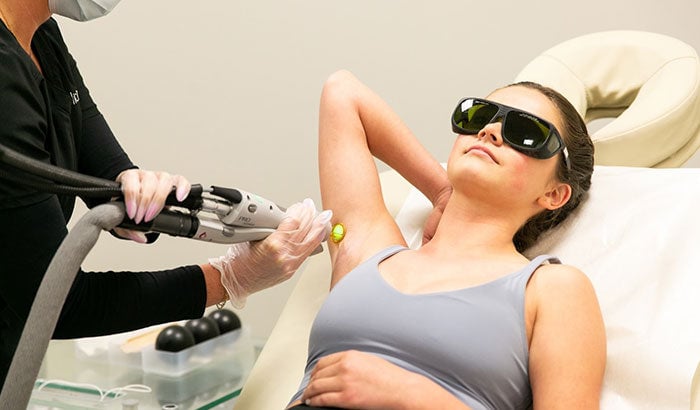Laser hair removal has become a widely recognized and sought-after method for long-term hair reduction, but its journey to the highly efficient and safe procedure we know today has been one of remarkable innovation and refinement. Over the decades, advancements in technology have not only improved its effectiveness but also expanded its accessibility to diverse skin tones and hair types. Here's a look at the fascinating evolution of laser hair removal(ازالة الشعر بالليزر) technology and its impact on modern aesthetics.
1. The Early Days: Ruby Laser Technology
The first FDA-approved laser for hair removal was the Ruby Laser, introduced in the 1990s. It operated at a wavelength of 694 nm, making it highly effective at targeting the melanin in hair follicles. While groundbreaking, the Ruby Laser was limited in its use. It was most effective for individuals with light skin and dark hair, as the strong contrast allowed the laser to precisely target the hair without affecting the surrounding skin. However, the technology was less effective for darker skin tones and carried a higher risk of burns and discoloration.
2. Advancements with Alexandrite Lasers
Building on the limitations of the Ruby Laser, the Alexandrite Laser was developed. Operating at a wavelength of 755 nm, it offered faster treatment times and slightly deeper penetration, making it suitable for larger treatment areas like the legs or back. While the Alexandrite Laser expanded the range of skin tones it could treat, it was still best suited for light to olive skin tones with darker hair. This phase marked a significant step forward in making laser hair removal more versatile and widely used.
3. The Emergence of Diode Lasers
Diode lasers represented a major leap in laser hair removal technology. Operating at wavelengths between 800 and 810 nm, they provided deeper penetration and were safer for a broader range of skin types, including medium and darker skin tones. Diode lasers became known for their combination of speed, precision, and reduced discomfort, making the treatment more appealing to a diverse audience. This innovation significantly increased the popularity of laser hair removal as a mainstream option.
4. The Introduction of Nd:YAG Lasers
The Nd:YAG laser, operating at a wavelength of 1064 nm, was a game-changer for individuals with darker skin tones. Its longer wavelength allowed it to bypass the melanin in the skin and focus solely on the hair follicle, minimizing the risk of burns or hyperpigmentation. While slightly less effective for lighter or finer hair, the Nd:YAG laser made laser hair removal accessible to those who had previously been excluded due to skin tone limitations. This inclusivity marked a turning point in the evolution of the procedure.
5. Modern Innovations and Combination Systems
Today, laser hair removal technology continues to advance with the development of combination systems and state-of-the-art cooling mechanisms. Many modern devices incorporate both Alexandrite and Nd:YAG lasers, allowing for tailored treatments that suit a wide range of skin tones and hair types. Additionally, integrated cooling technologies and shorter pulse durations have made treatments faster, safer, and more comfortable. These innovations have not only improved the efficacy of laser hair removal but also enhanced the overall experience for clients.
6. The Future of Laser Hair Removal
As technology progresses, laser hair removal in Dubai(ازالة الشعر بالليزر في دبي) is becoming even more efficient and inclusive. Research is focused on creating devices that can target lighter, finer hairs and treat all skin tones with equal precision. Innovations in home-use laser devices are also making the procedure more accessible for individuals who prefer at-home treatments. With these advancements, laser hair removal is poised to become an even more integral part of personal grooming routines worldwide.
Conclusion
The evolution of laser hair removal technology is a testament to the power of innovation in making advanced aesthetic treatments safer, more effective, and more inclusive. From the Ruby Laser to the modern systems we have today, each development has brought the procedure closer to perfection, addressing the diverse needs of individuals across the globe. With ongoing advancements, laser hair removal will undoubtedly continue to redefine the standards of convenience and effectiveness in personal care.

